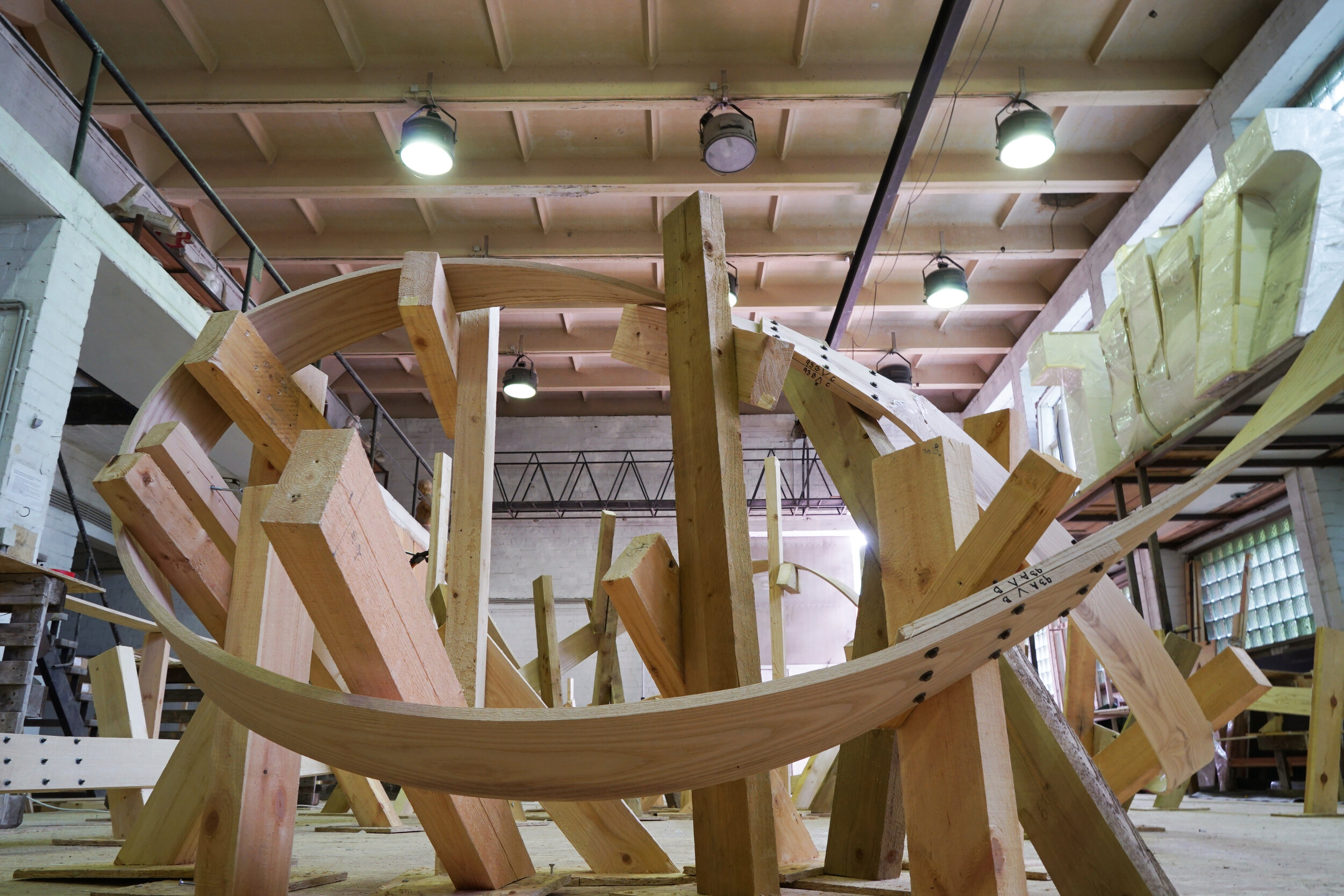TAB 2019 Steampunk Pavilion
Tallinn, Estonia (2019)
STEAMPUNK is a pavilion built for the 5th edition of Tallinn Architecture Biennale (TAB 2019) in Estonia, and will remain in place for 2 years. The pavilion is built out of steam-bent timber elements, assembled into intricate geometries following holographic guides, projected through Microsoft HoloLens - an augmented reality headset designed for aid in manufacturing. Both the process of forming the timber elements and the assembly process rely on use of holographic guides to assure the precision in what is otherwise a craft based process. This structure is a prototype for an adaptive design and fabrication system, which is resilient to wide tolerances in material behavior and fabrication accuracy, testing the Augmented Reality assisted fabrication research on scale 1:1.
As the designers of Steampunk we have not produced drawings or lines of CNC code from which parts of our design might be cut, printed or assembled and instead have developed an experimental approach to materializing architecture that serves as a deliberate polemic in the context of robotic production and automation. We are interested in approach to making that hybridizes analogue construction with the precision and flexibility of digital models. By rendering digital models as holographic overlays directly within construction environments, fabricators can use their own expertise and inventiveness to produce highly intricate and complex objects entirely by following these holographic guides using relatively primitive analogue tools. In order to realize this vision of an adaptive design and fabrication process the pavilion works with the constraint of two fundamental elements of 100 x 10 mm Ash profiles and 30 mm steel section, formed into place with the help of holographic models, projected through the AR headset. This removes the necessity of anticipating every aspect of material behaviour in digital models, leaving open a certain degree of indeterminacy as material affects are discovered, desired and amplified during construction. It is this liberation of digital expression from the constraints of digital fabrication, together with the opportunity for nuance and material effects derived from material craft, that drives the architectural effects of the pavilion.
Design by: Gwyllim Jahn, Cameron Newnham, Soomeen Hahm, Igor Pantic
Engineering: Format Engineering (UK)
Project & Construction Team: Sean Guy, Xavier Madden, Nick van den Berg, Hanjun Kim, Aishe Kokoshi, Triin Juhanson, Karim Rouabah, Szymon Padlewski, Thorlak Solberg, Christopher Ferris, Jack Mansfield-Hung, James Morton, Muhammad Ejle, Taivo Lints, Hugo Loydell, Mathilde Grodem, Trine Jarsto, Bodil Eiterstraum, Gerda Levin, Simon Greil, Linn Johansson, Filip Nyborg, Anne Frydenlund, Arissara Reed, Haya Termanini, Mikkel Sorenson, Katrin-Maria Terras, Liis Aleksejeva, Annika Ülejõe, Kertu Jõeste, AnnaLiisa Saavaste, Helena Ojabstein, Lukas Winter, Philippe Hannequart, Tristan Krevald and Tom Morgan
Competition Team: Gwyllim Jahn, Cam Newnham, Soomeen Hahm, Igor Pantic, Nick van den Berg, Hanjun Kim, Kiheung Kwon, Eri Sumitomo, Katerina Konstantinidou, Jakub Klaska
Photography: Peter Bennets, Hanjun Kim, Cameron Newnham














